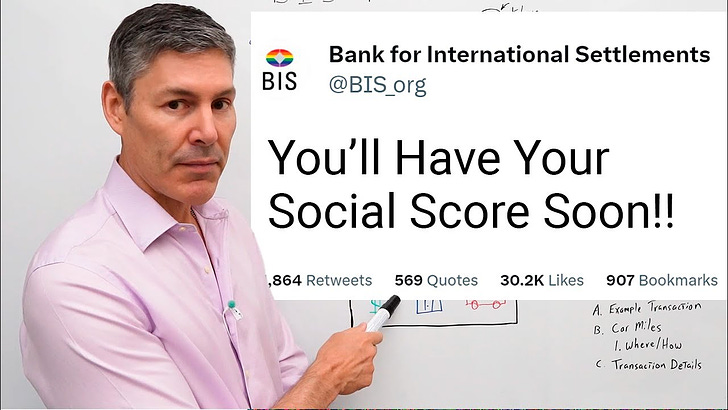Excellent video from George Gammon on the BIS’s recently released plan for a unified global ledger, a “tokenized programmable platform.”
As I pointed out in the post below, a CBDC is only tolerable if it operates under strict, democratically-determined regulations outlawing its use for discrimination on the basis of anything but democratically-determined criteria, as is the case with credit scoring now in place. Its power as an instrument of fascist oppression is obvious if elites control it. Gammon’s video is definitely worth watching, as he discusses the ways to try to circumvent a CBDC, which he considers an inevitability. He lives in Columbia.
Can Elon Musk's X app ever not be evil?
Elon Musk is evidently some kind of genius, but we don’t know if we can trust him. Yes, the X app would be convenient, to be sure. But … One thing is certain: we don’t want a CBDC-enabled social credit scoring system (SCS) administered through a “private” entity like Twitter so that the government can say its hands are clean.
can credit scores in the US use social media data?
That’s an interesting question. According to some sources, social media credit scoring uses social data to calculate the creditworthiness of someone applying for a loan1. By checking social media activity, registered profiles, and even the reputation of specific social media networks, lenders can get a better idea of the kind of borrower you could be1.
However, this practice is not very common in the US, as there are legal and ethical challenges involved. Some lenders may use social media to verify the identities or worthiness of loan or credit applicants, but they are not allowed to discriminate based on factors such as race, gender, religion, or political views23. Additionally, some consumers may be concerned about their privacy and data security when sharing their social media information with lenders12.
Therefore, the traditional credit scores in the US are still determined by five factors: payment history, credit utilization, length of credit history, credit mix, and new credit inquiries3. These factors do not have anything to do with your online activity. However, this may change in the future as more data sources and technologies become available for credit scoring2.
1. seon.io
2. knowledge.wharton.upenn.edu
3. webfx.com
4. forbes.com
Have a blessed day!



